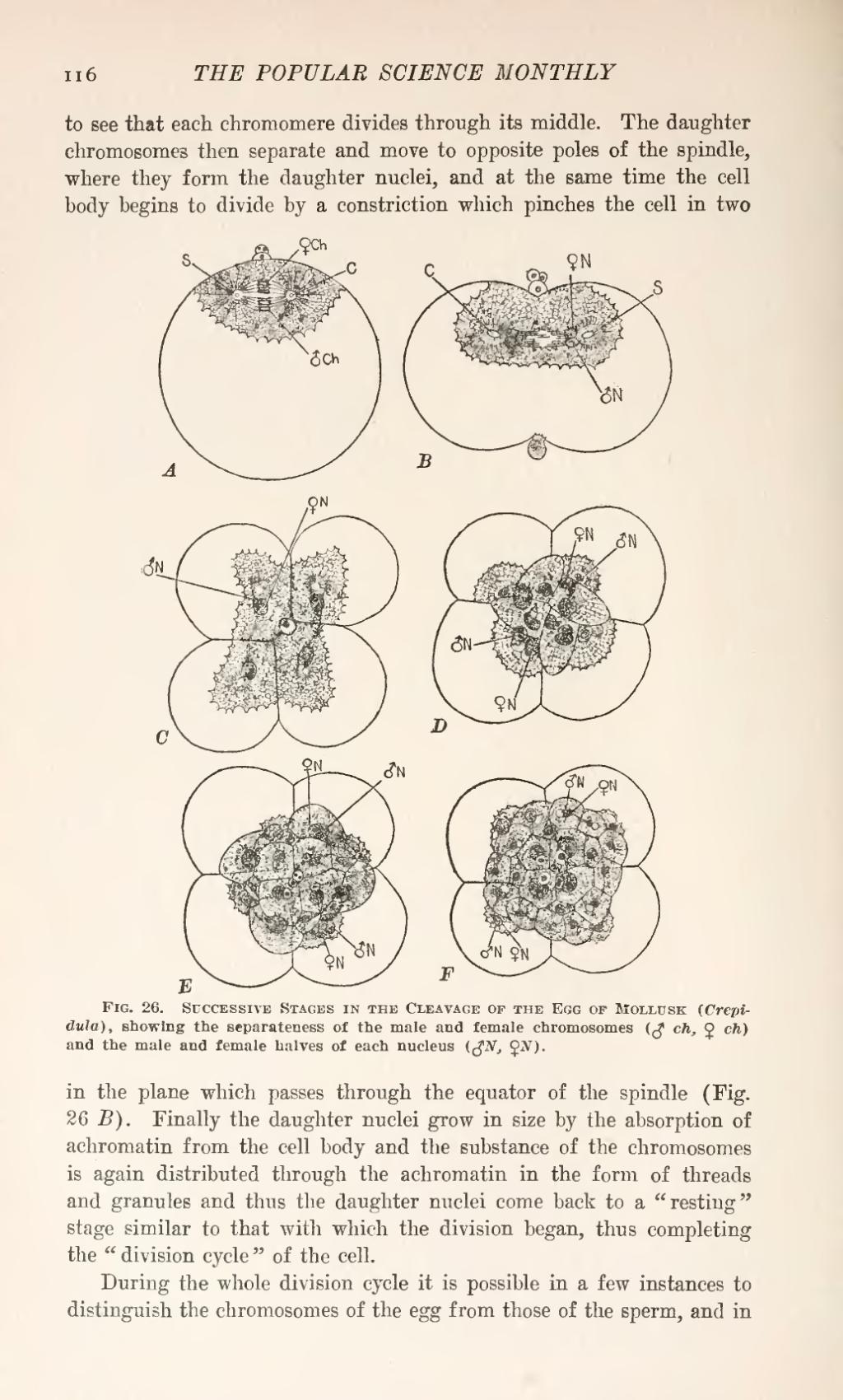to see that each chromomere divides through its middle. The daughter chromosomes then separate and move to opposite poles of the spindle, where they form the daughter nuclei, and at the same time the cell body begins to divide by a constriction which pinches the cell in two
Fig. 26. Successive Stages in the Cleavage or the Egg of Mollusk (Crepidula), showing the separateness of the male and female chromosomes (♂ ch, ♀ ch) and the male and female halves of each nucleus (♂N, ♀N).
in the plane which passes through the equator of the spindle (Fig. 26 B). Finally the daughter nuclei grow in size by the absorption of achromatin from the cell body and the substance of the chromosomes is again distributed through the achromatin in the form of threads and granules and thus the daughter nuclei come back to a "resting" stage similar to that with which the division began, thus completing the "division cycle" of the cell.
During the whole division cycle it is possible in a few instances to distinguish the chromosomes of the egg from those of the sperm, and in

